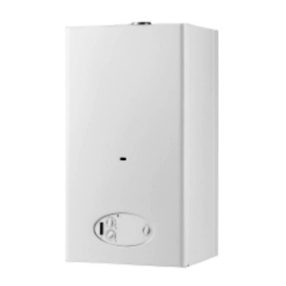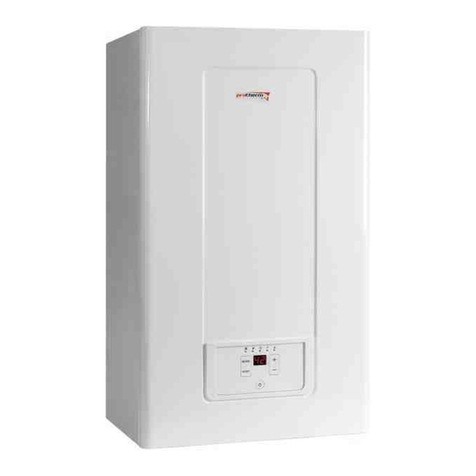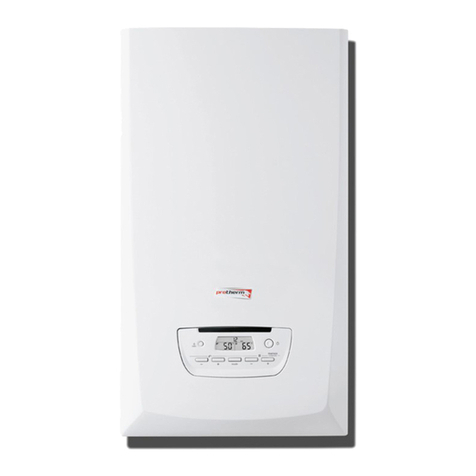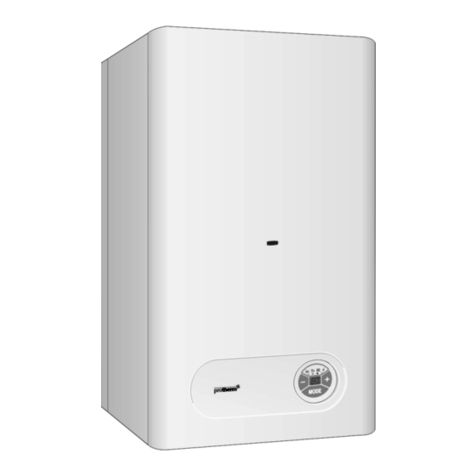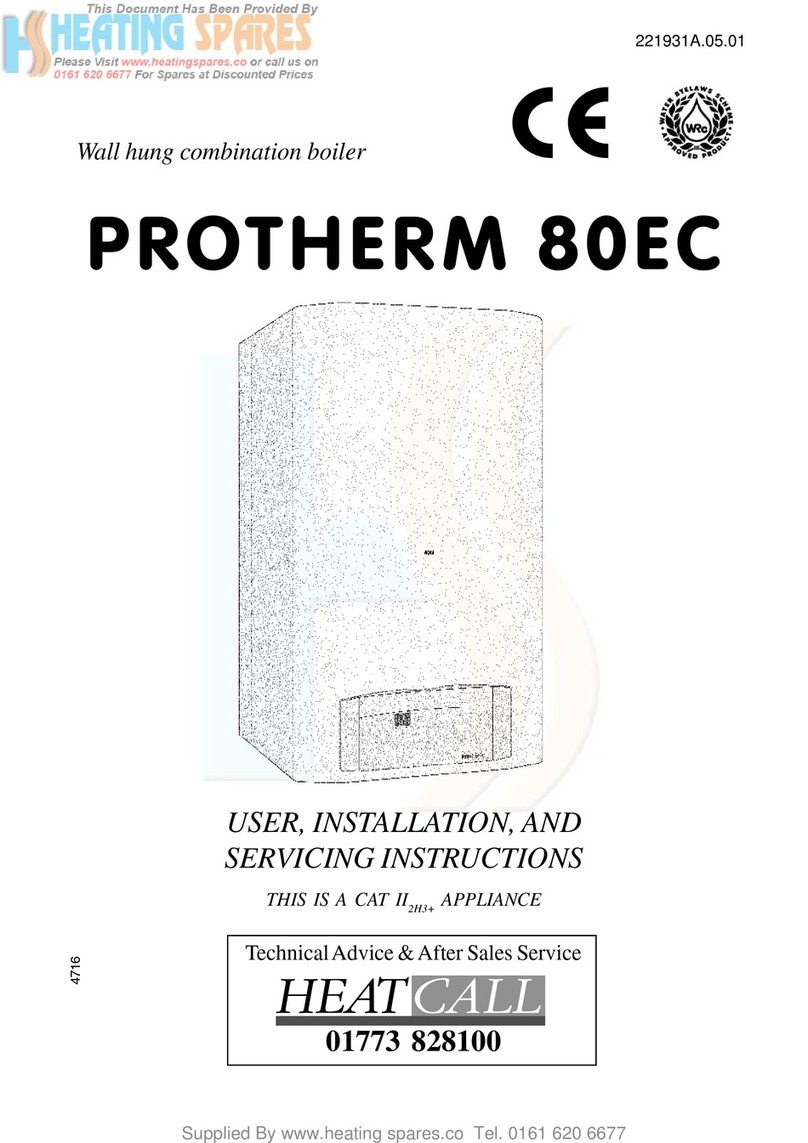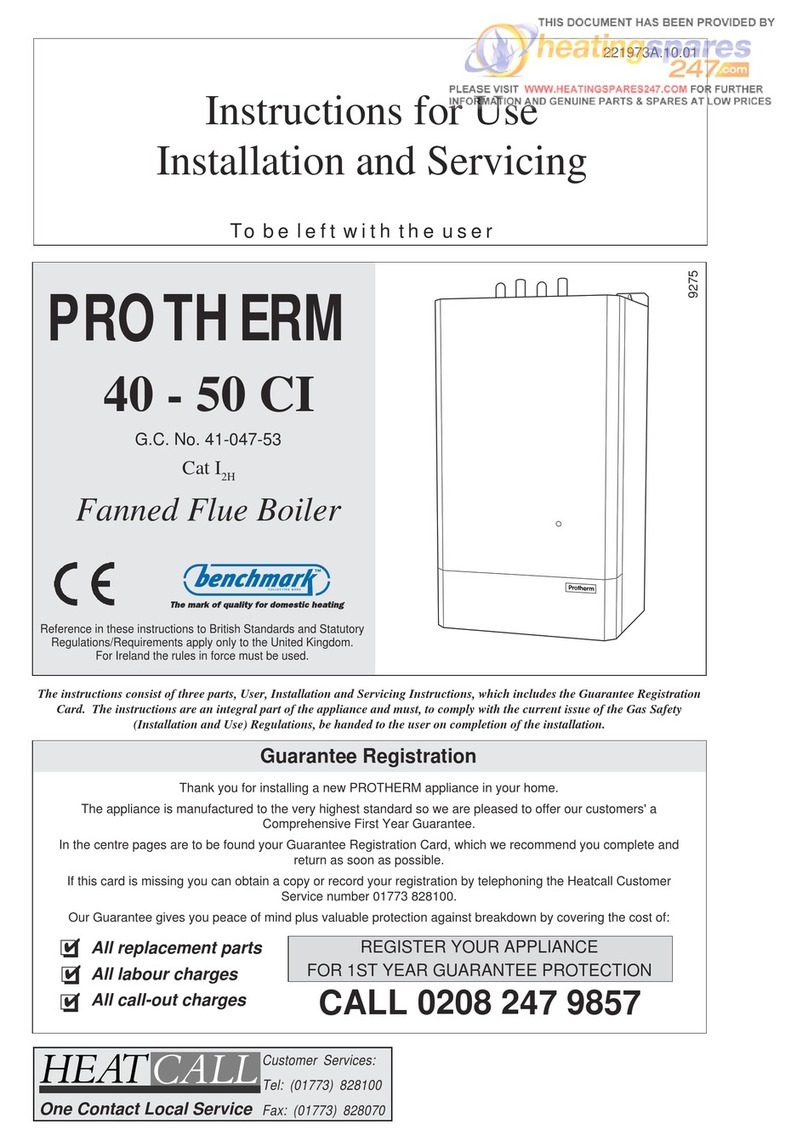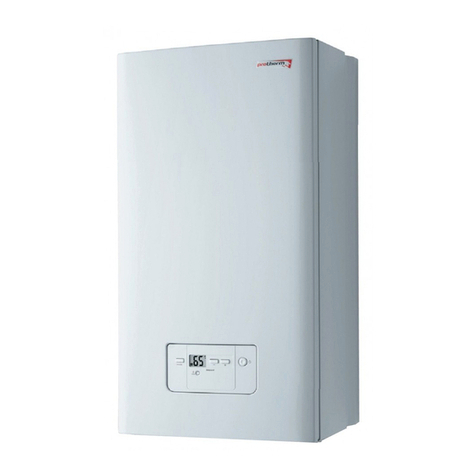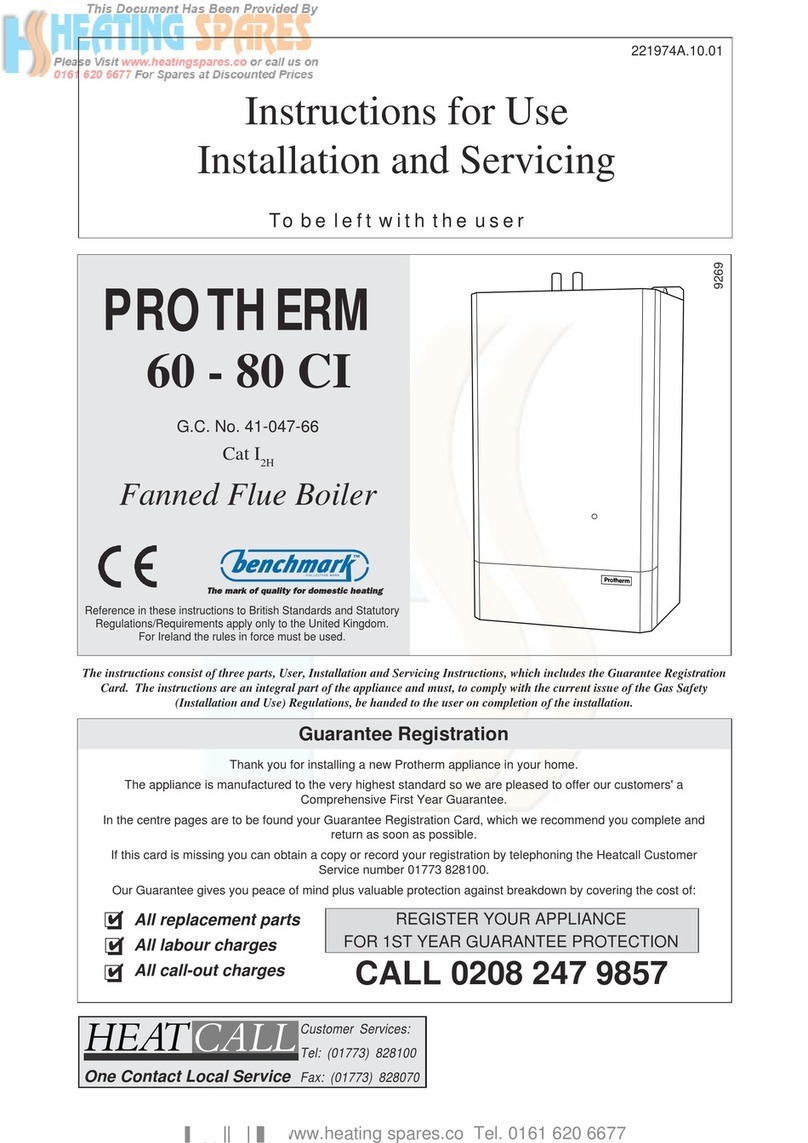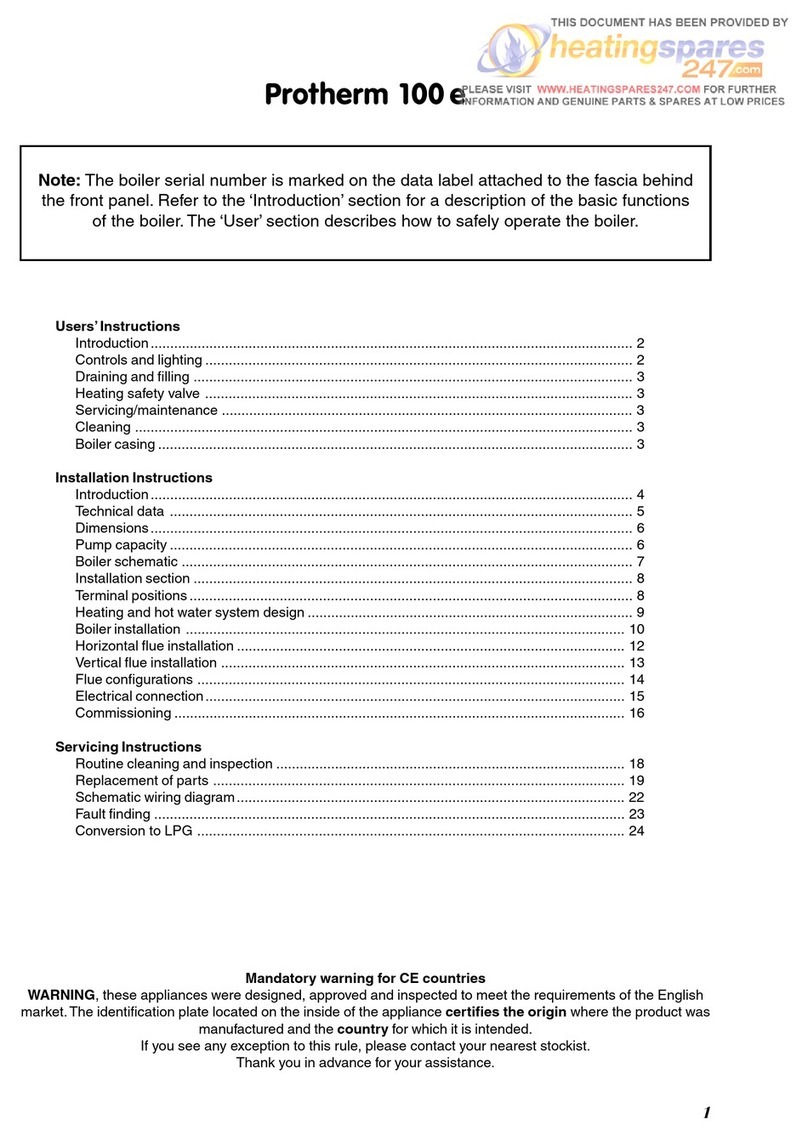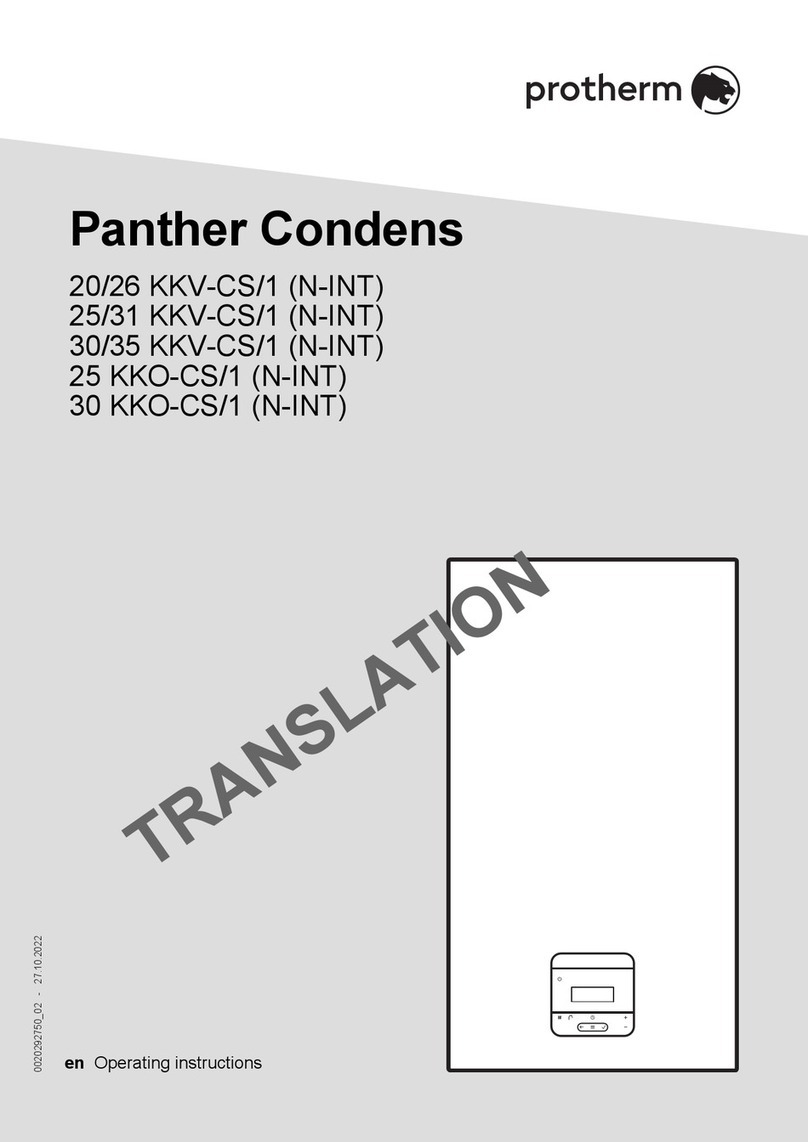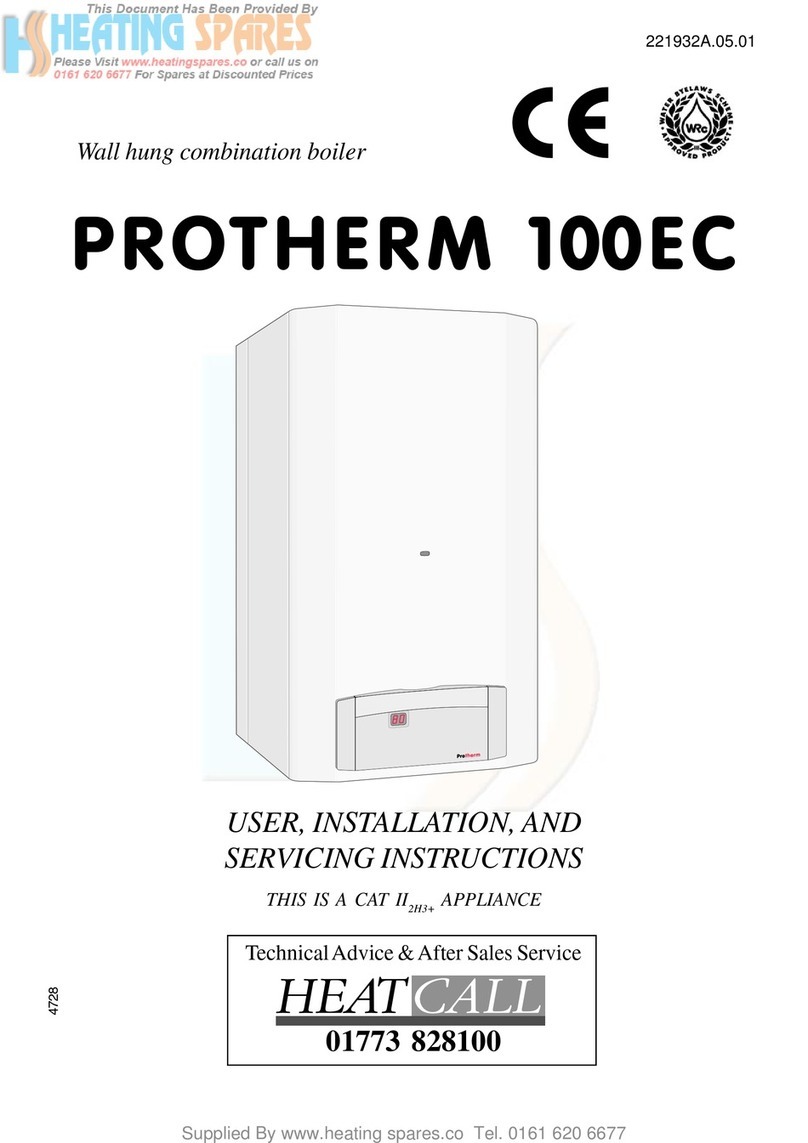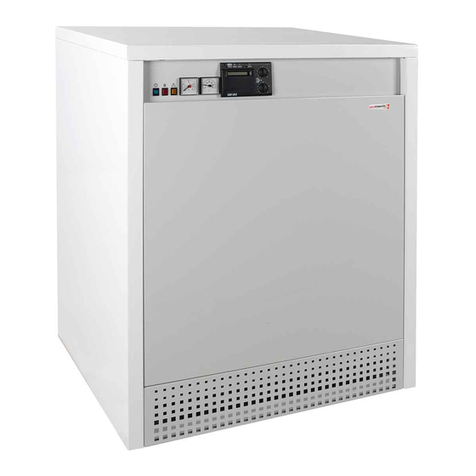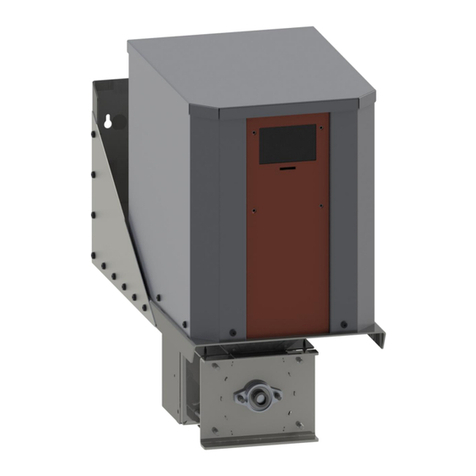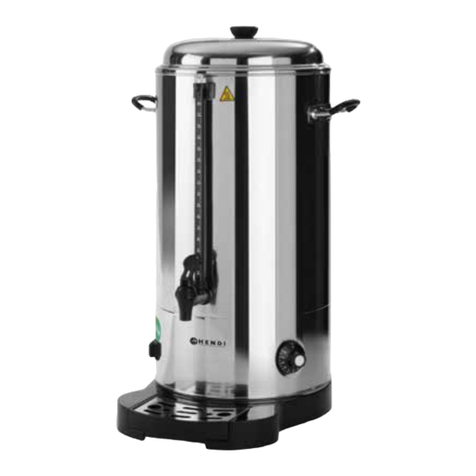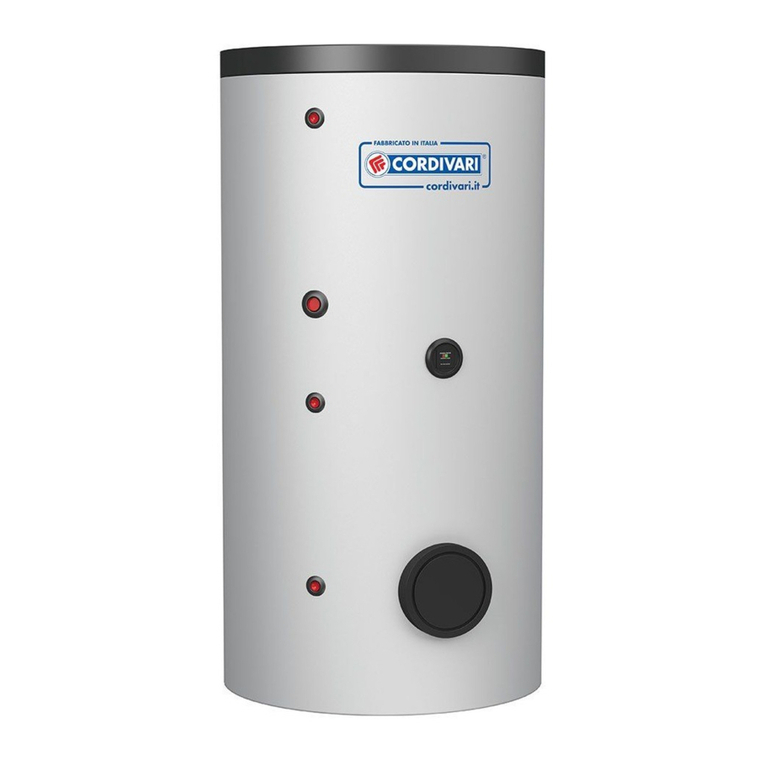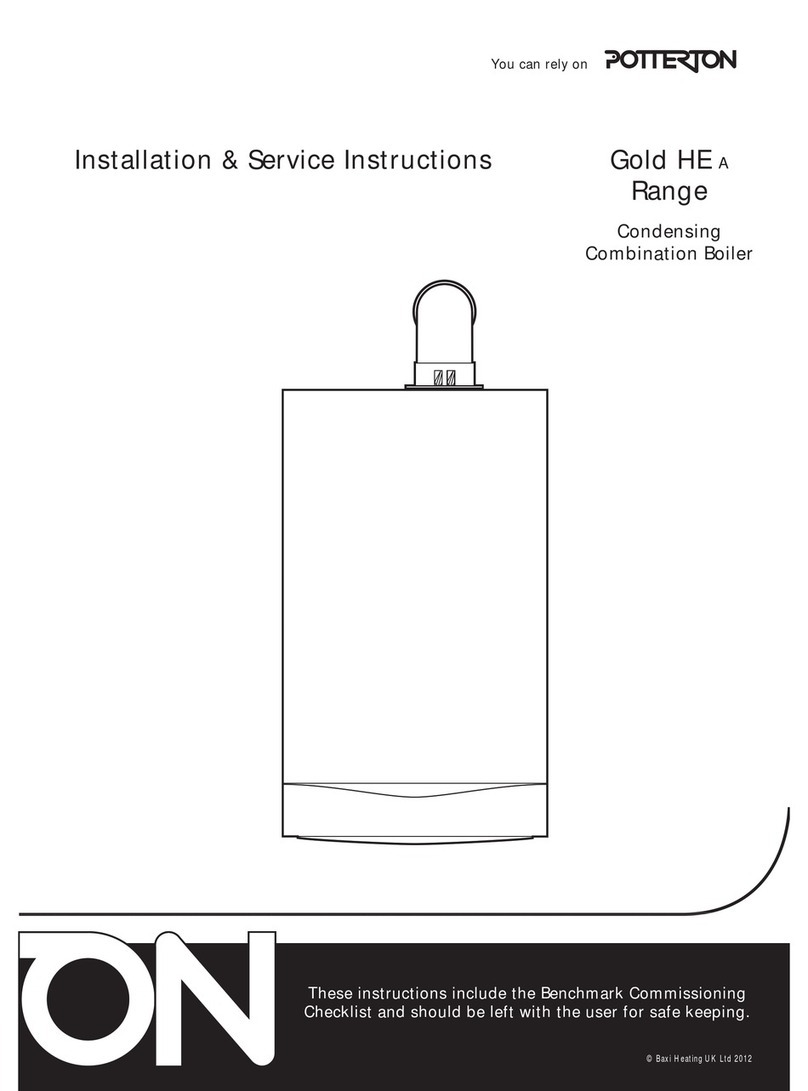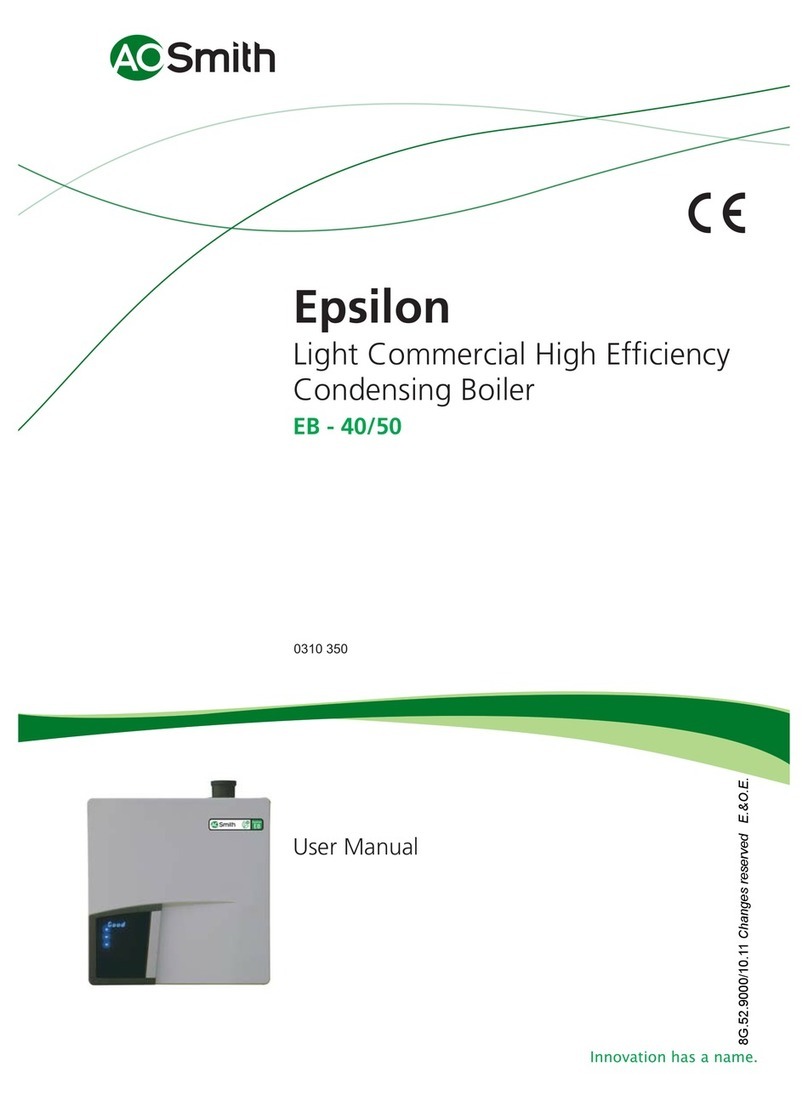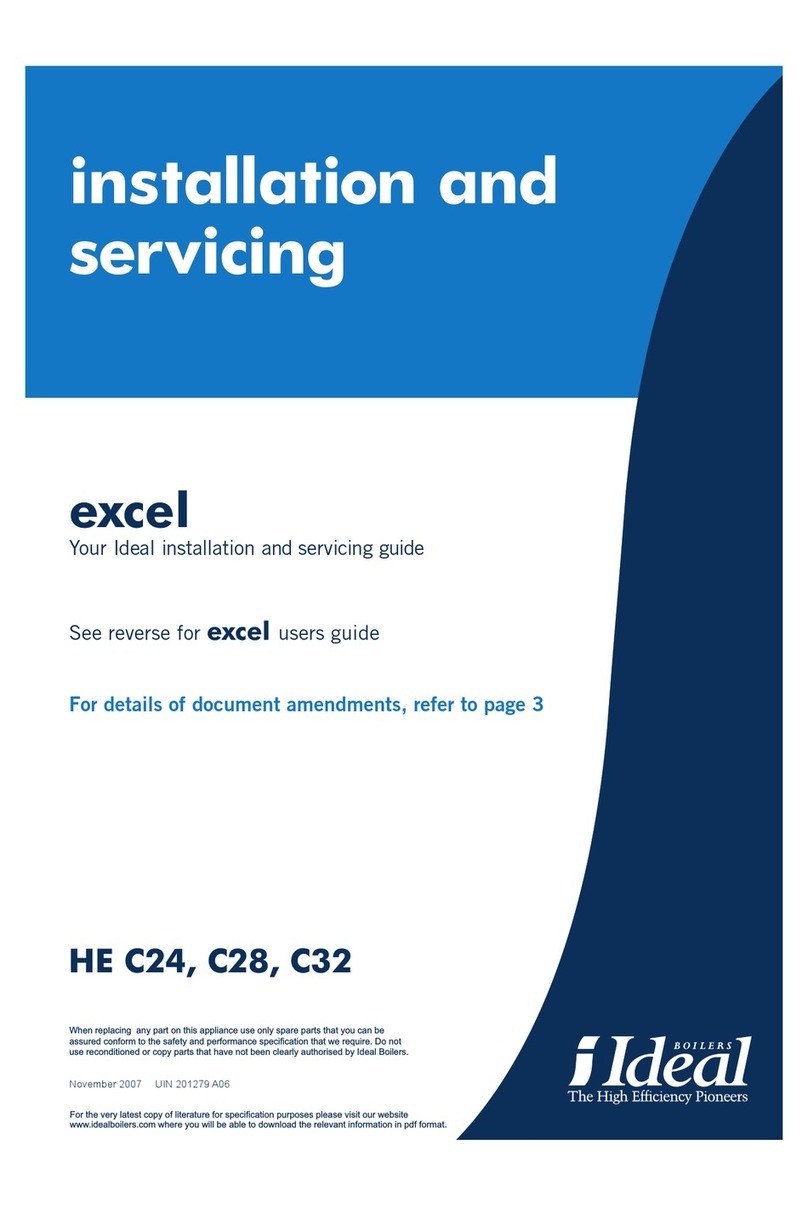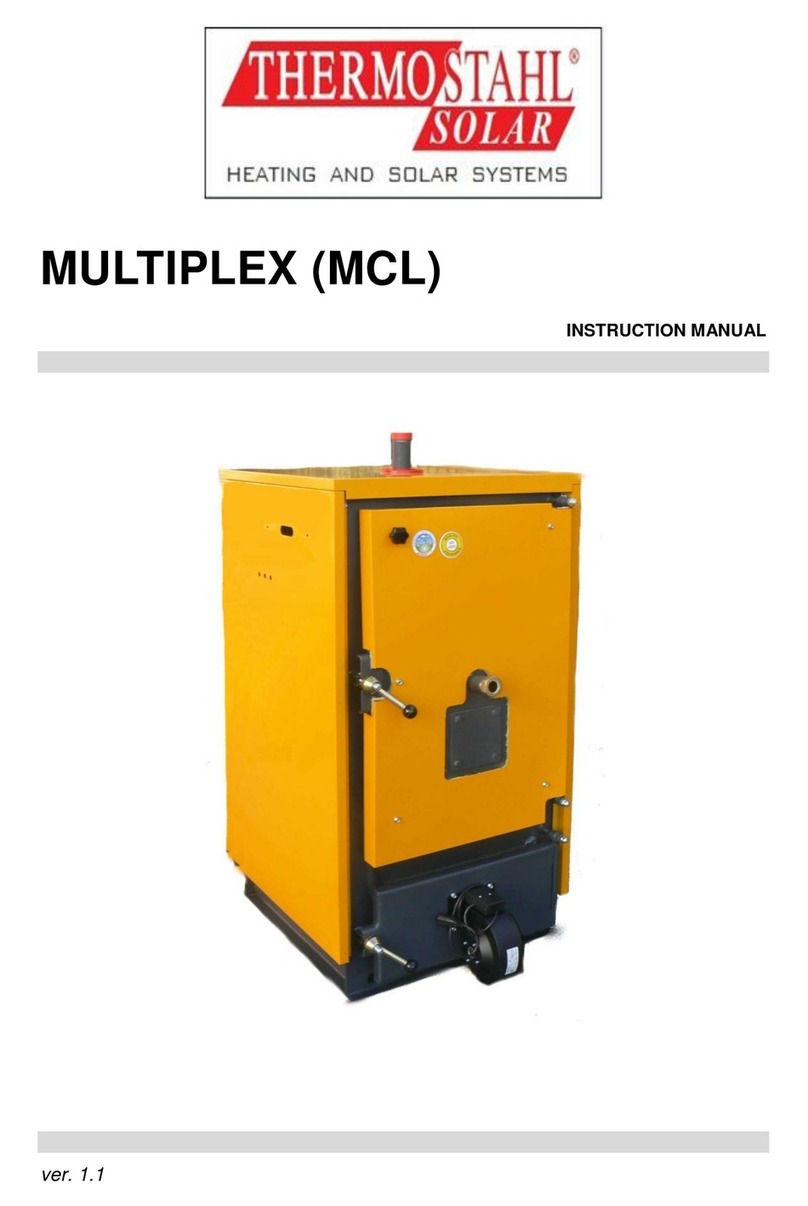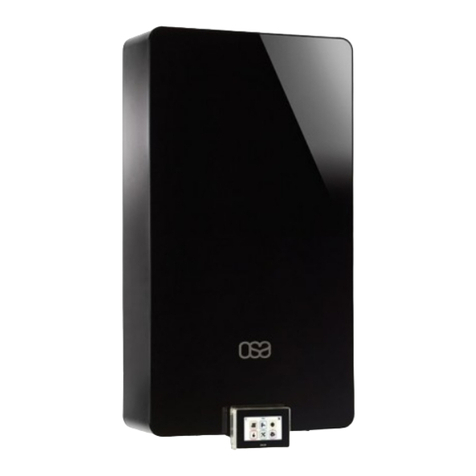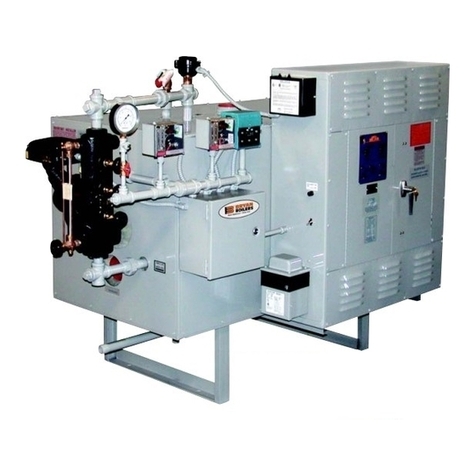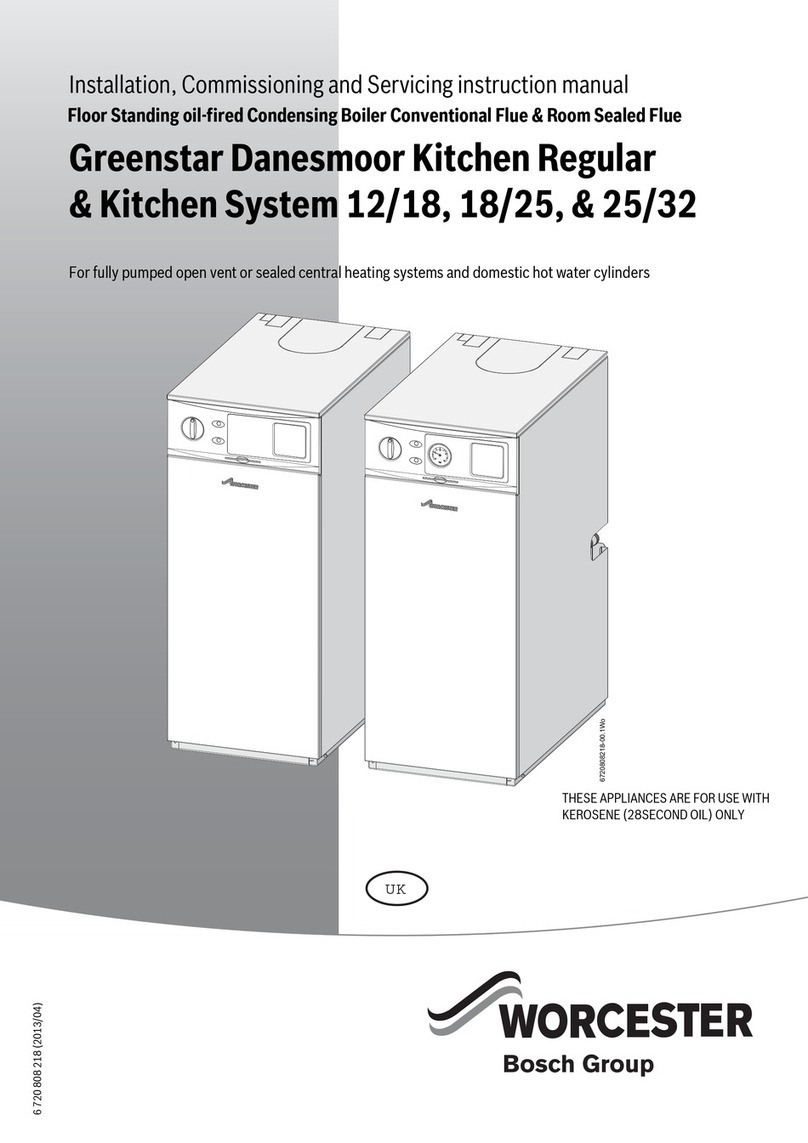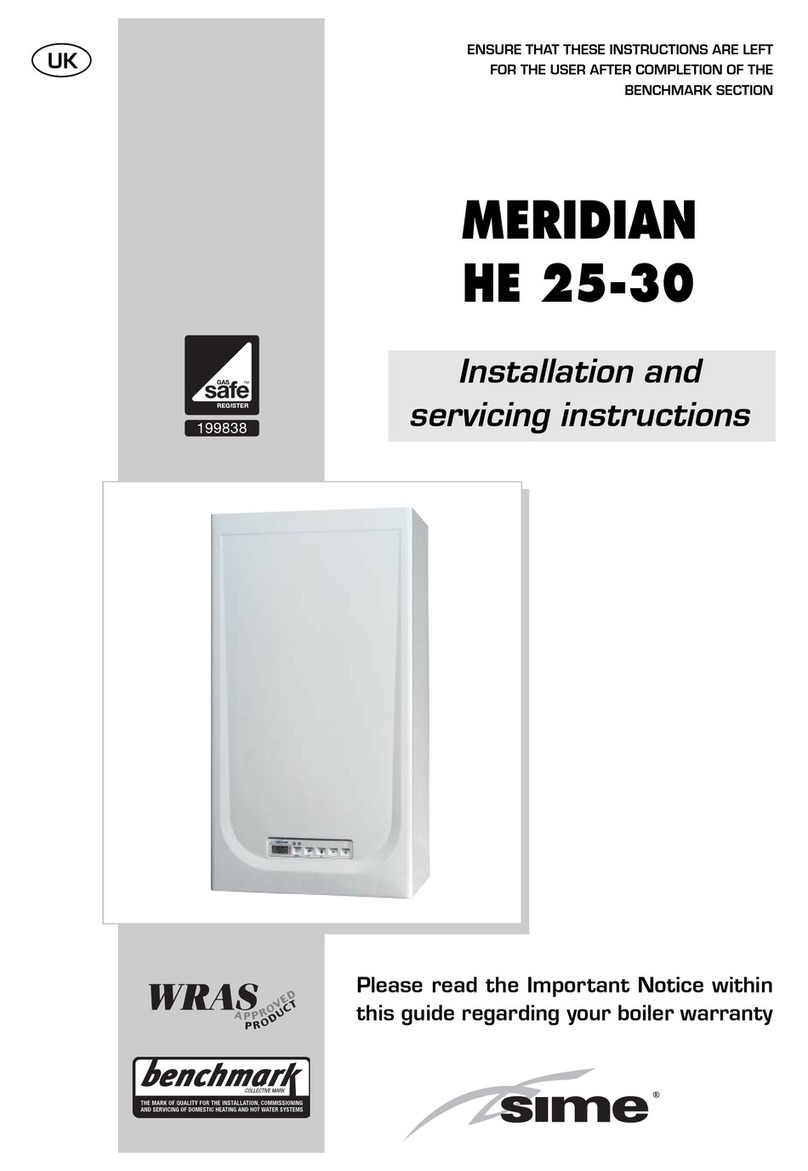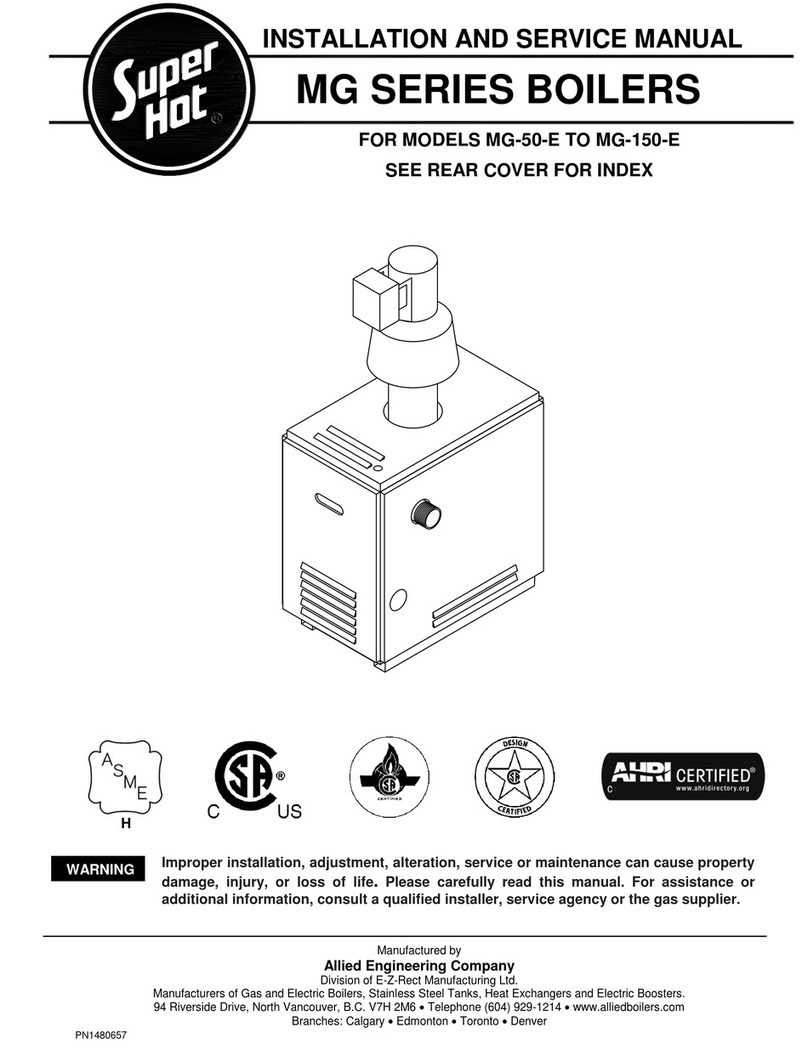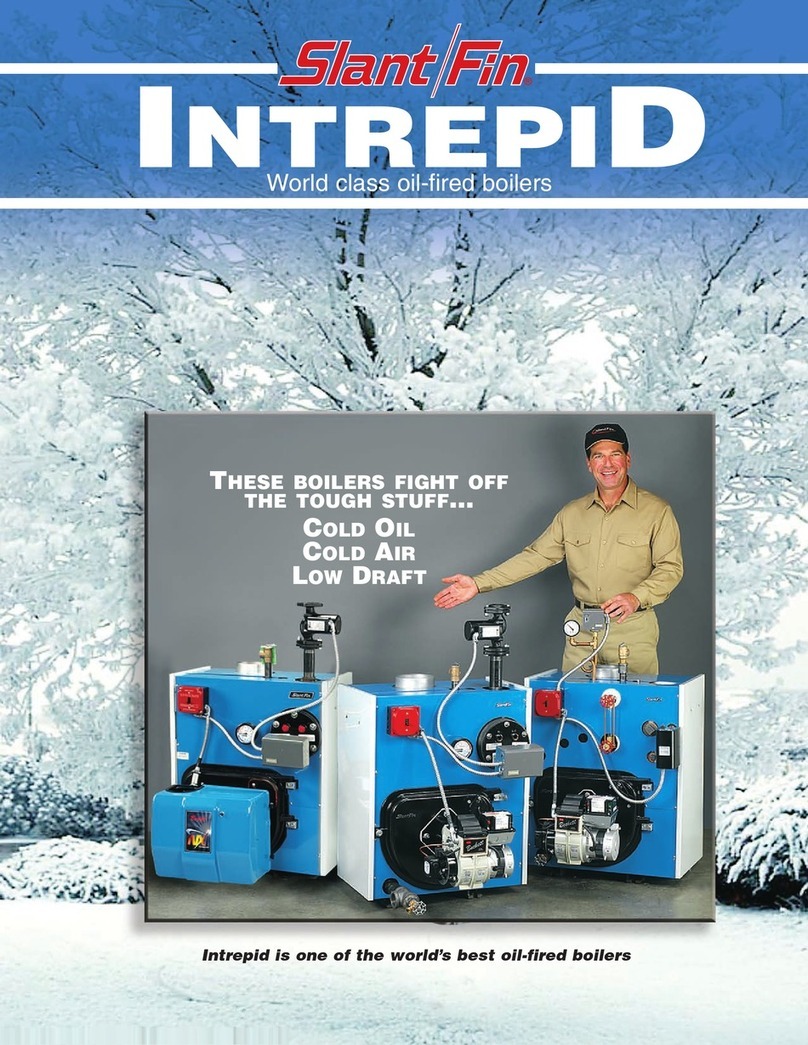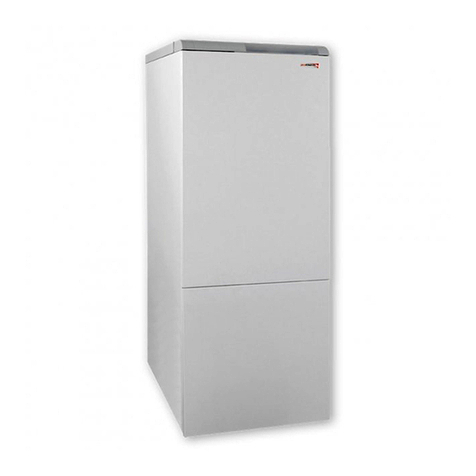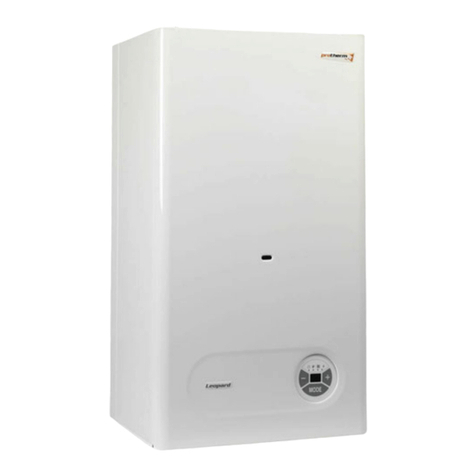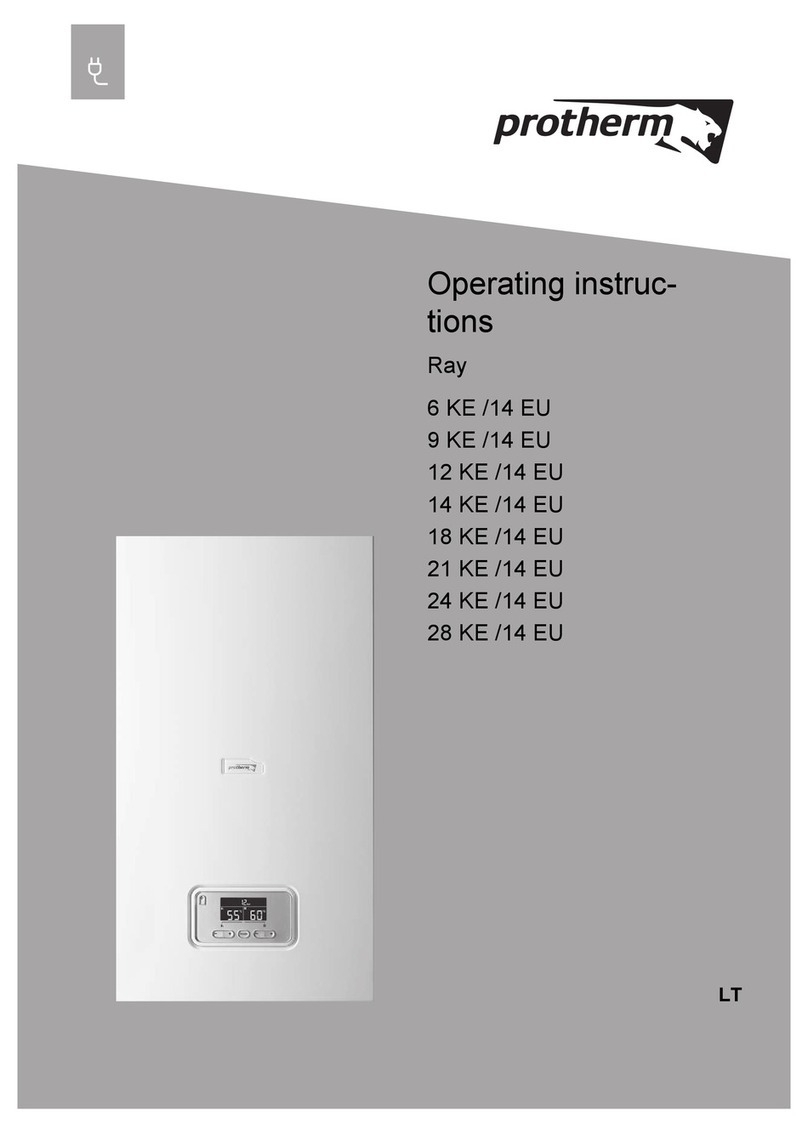
Supplied By www.heating spares.co Tel. 0161 620 6677
10 11
Using the boiler without a room
control unit
When running in this mode, the boiler
maintains the selected heating water
temperature. No room control unit is con-
nected, the terminals for its connection
must be interconnected with a jumper
(standard factory setting).
Setting procedure:
• turn the main switch to the ON position
(I);
• set the required heating water tempera-
ture on the control panel.
Using the boiler with a room control
unit
The boiler maintains the selected heating
water temperature. The
room control unit wiring
terminal jumper is removed
and the room control unit
is wired to the terminals.
The boiler is turned on and
off to maintain the set temperature in the
room in which the control unit is installed.
This room must not have thermostatic val-
ves installed on heating radiators.
When the room control unit turns the
boiler on, this status is indicated by a dot
after the number shown on the display.
Important:
You must set on the boiler
control panel a heating water temperature
(temperature of the water in the system)
which will be capable of covering thermal
losses of the building even in low outdoor
temperatures. We recommend to select
a temperature within the range of 60 -
80˚C.
Using the boiler with equithermal
control
The boiler changes the heating water
temperature as the outdoor temperature
changes.
Important:
An outdoor temperature sen-
sor must be connected to the boiler! The
outdoor sensor should be located on the
coldest wall of the building (facing north
or north-west), approximately 2.5 – 3 m
above ground level. The sensor must not
be exposed to any false heat waves from
open windows or ventilation shafts, or to
sunshine.
A rule applies when selecting a heating
curve that lower number curves are
suitable for buildings with good thermal
insulation and steeper thermal gradient,
and vice versa.
The thermal curve diagram is used as a
primary source of information. The sys-
tem should be fine-tuned by monitoring
outdoor and indoor temperatures for a
few days.
For first setting of the system choose
curve E6.
When setting the system up, all radiator
valves must be fully opened, thermostatic
valves must be set to maximum tempe-
rature and doors and windows must be
shut.
Setting the curve slope as well as the
parallel shift is done in small increments,
and after each step it is necessary to
wait roughly 2 hours and then assess
the change. It is better to do the setting
when the outdoor temperatures fluctuate
significantly, and the final setting should
be done when the outdoor temperature
drops below freezing point.
Setup procedure:
1. Select the “heating water temperature”
mode and make sure that the function
SUMMER is not selected (symbol --). You
must set a temperature value (this tempe-
rature will have no effect on the equither-
mal control mode).
2. Select the “equithermal mode - curve
slope” and set the E6 symbol - see page
6.
3. Select the “equithermal mode – parallel
shift” and set the symbol (P-).
4. By pressing the MODE button, save the
setting in the memory and return back to
the starting position.
After a few days (when the premises have
been heated up), readjust the curve slope
as required:
5. If the indoor temperature does not
significantly changes with outdoor tempe-
rature changes, the curve selection was
correct. The temperature can be changed
to a higher or a lower value by changing
the size of the parallel shift – see the part
“Controls and signals – Equithermal mode
– Parallel shift”.
Important:
If the indoor temperature
changes significantly with outdoor tem-
perature changes, with the indoor tempe-
rature increasing with a dropping outdoor
temperature, select a lower value curve
and vice versa.
Using the boiler with equithermal
control and room control unit
A room control unit extends the equivalent
control mode by time control and a hea-
ting economy mode (e.g. at night).
Setup procedure:
• set the equivalent control as described
above.
• connect the room control unit to the boi-
ler (after removing the wiring terminal
jumper) and set the required temperatu-
re during the comfortable temperature
period on the control unit to about 5˚C
higher than the temperature reached by
the equithermal control. For economy
mode period (at night, when absent), set
on the room control unit the actual requi-
red temperature – it must be always at
least 3˚C lower than the actual comforta-
ble temperature.
Example:
• the (comfortable) indoor temperature
maintained by the equithermal control is
21˚C.
• set the room control unit for the comfor-
table temperature period to 26˚C and for
the economy mode period to the actual
required temperature, e.g. 16˚C.
Setting the boiler output
The boiler is factory-set to its maximum
output.
Important:
Output setting may be chan-
ged only by an authorised technician.
Boiler control
Protection functions
Protection against freezing
The boiler has a protection system which
protects the boiler (but not the heating and
the hot water distribution systems) against
freezing.
When the heating water in the boiler drops
below 10˚C, the boiler pump is automati-
cally switched on. When the heating water
temperature drops below 8˚C, the boiler
is automatically started up and heats until
the heating water temperature reaches
25˚C.
Note:
The freezing protection system
functions independently from the room
control unit and is activated even when
the heating system is turned off (set to
--).
Important:
If the boiler is left in an envi-
ronment with ambient temperature below
3˚C, the boiler cannot be started up by
turning the main switch on.
Pump protection
When the pump is idle for a protracted
period of time, switch it on once every 24
hours for a short while (approximately 30
seconds) to prevent it from ceasing.




















